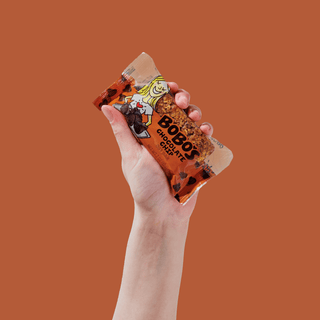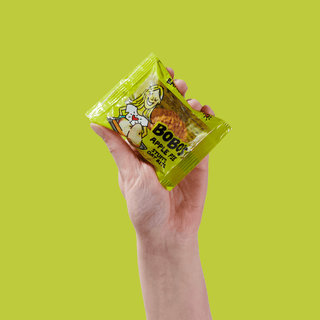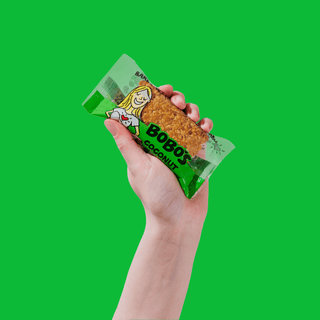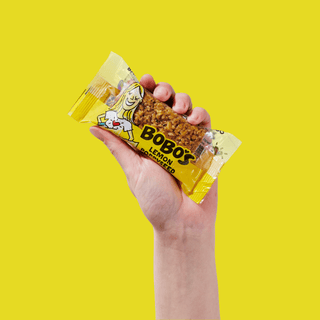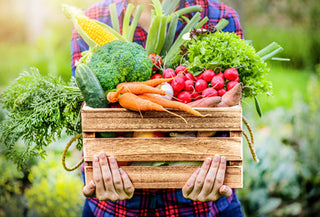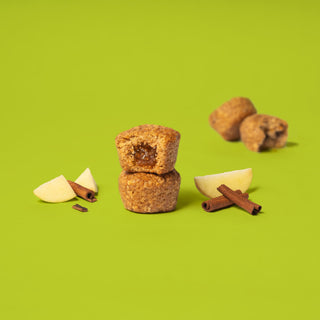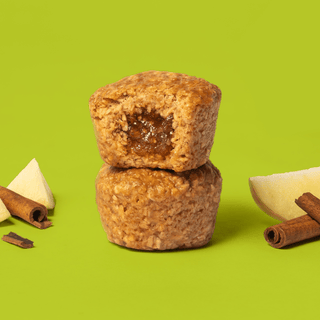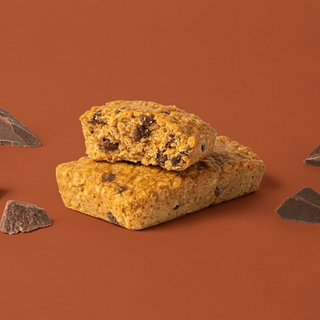Featuring
There are benefits to eating fresh, seasonal produce at its peak during a particular time of year, according to what's being harvested. It will not only taste its absolute best on its own or in any dish, but its nutrients will be better retained. Plus, shopping consciously and buying local is often more environmentally-friendly and cheaper than buying imported produce. So, if you're ready to switch to fruits and vegetables in season, here's a handy guide and monthly seasonal produce chart to help you on your next shopping trip. Keep in mind, depending on your region and climate, this list will vary.
Seasonal produce: what produce is in season each month?
Here's a month by month breakdown of what produce is in season.
January
Get excited…winter produce is full of hearty and delicious options, and January is the perfect month to indulge in these at their peak! Seasonal produce in January features flavorful and nutrient-rich vegetables like brussel sprouts, leafy kale, earthy beets, sweet leeks, decadent sweet potatoes and a variety of winter squash (like acorn squash, butternut squash, and spaghetti squash). The deep and delicious flavor profile from winter vegetables is balanced out with bright, juicy notes of winter citrus like sweet oranges and tangerines, tangy grapefruits, and zesty lemons. And when you’re on the go this month, Bobo’s fruit bars make the perfect snack! (We love the Lemon Poppyseed Oatmeal Bar this month to keep with the citrus vibes in January!)
Hearty produce types are freshest in January. Think cruciferous vegetables like brussels sprouts and kale, along with beets, leeks, sweet potatoes, and winter squash, including acorn, spaghetti, and butternut. For fruits, opt for citrus types like oranges, grapefruit, tangerines, and lemons. And when you're on the go, Bobo's fruit bars make the perfect snack.
Fruits
- Oranges
- Grapefruit
- Tangerines
- Lemons
Vegetables
- Brussels sprouts
- Kale
- Beets
- Leeks
- Sweet potatoes
- Winter squash
January Seasonal Produce Meal Idea: Pick a few fruits and vegetables in season this month from your shopping list to toss into a winter produce salad or protein bowl…yum!)
February
Seasonal produce in February shares a lot of the same winter produce from January’s list. However, slightly sweet cabbage and earthy turnips are added to the seasonal produce list this month!
Fruits
- Oranges
- Grapefruit
- Tangerines
- Lemons
Vegetables
- Cabbage
- Turnips
- Brussels sprouts
- Kale
- Beets
- Leeks
- Sweet potatoes
- Winter squash
February Seasonal Produce Meal Idea: Get cozy and warm up this month with a colorful-medly of roasted beets, turnips and brussel sprouts…packed with flavor AND nutrients!)
March
Get ready to be surrounded by all things green in March…including your seasonal fruits and veggies! As weather begins to warm up a tad in many areas, seasonal produce in March welcomes lots of fresh, leafy greens such as tender spinach, bold Swiss chard, and robust collard greens. Other seasonal vegetables this month include snappy green beans, savory broccoli, crunchy radishes and earthy mushrooms. As for seasonal fruit in March, look for kiwi, mangoes, and strawberries to be super fresh and peak! (...and when we’re not snacking on FRESH strawberries this month, we love to treat ourselves to Bobo’s Strawberry Stuff’d Oat Bites.)
As the March weather gets milder in many places, you can often find fresh greens like spinach, Swiss chard, and collard greens. Green beans, broccoli, radishes, and mushrooms are super fresh at this time of year, too. When shopping for fruit, look for strawberries, mangoes, and kiwi.
Fruits
- Strawberries
- Mangoes
- Kiwi
Vegetables
- Spinach
- Swiss chard
- Collard greens
- Green beans
- Broccoli
- Radishes
- Mushrooms
March Seasonal Produce Meal Idea: Keep with the green theme this month and blend yourself a green smoothie! Along with other tried-and-true smoothie ingredients, throw in some of this month’s seasonal fruits and vegetables…like spinach, kiwi, mangoes & strawberries!
April
Seasonal produce in April carries over a lot of the fruits and vegetables from March’s list, and says hello to a few new additions. As we welcome spring (and warmer weather - yay!), we start to see buttery peas, sharp asparagus and tangy rhubarb hitting their peak.
Fruits
- Strawberries
- Mangoes
- Kiwi
Vegetables
- Peas
- Asparagus
- Rhubarb*
- Spinach
- Swiss chard
- Collard greens
- Green beans
- Broccoli
- Radishes
- Mushrooms
April Seasonal Produce Meal Idea: Get saucy this month and take your basket of fresh, seasonal produce from your grocery haul and whip up a seasonal vegetable stir-fry! Vegetables from your seasonal produce shopping list like broccoli, green beans, mushrooms, peas, radishes and chopped collard greens taste amazing sauteed in soy sauce and served over a bowl of noodles!
May
You can look for a lot of the same spring produce from April to be at their peak and on the seasonal produce list in May. As we quickly approach the summer season, we start to see a few new additions of summer fruits and vegetables such as luscious apricots, crisp zucchini and crunchy okra make our seasonal produce list this month as well!
Fruits
- Apricots
- Strawberries
- Mangoes
- Kiwi
Vegetables
- Zucchini
- Okra*
- Peas
- Asparagus
- Rhubarb*
- Spinach
- Swiss chard
- Collard greens
- Green beans
- Broccoli
- Radishes
- Mushrooms
May Seasonal Produce Snack Idea: What better way to get ready for summer than with a decadent mango and kiwi seasonal salsa! *Option to serve with grilled zucchini, okra, asparagus and green beans at your next backyard get-together or dinner party!
June
Hello summer means hello summer produce! Your local farmers market is sure to be bursting with seasonal produce in June. Refreshing, juicy summer fruits pop up in June, like cherries, blueberries, blackberries, raspberries, peaches, plums, cantaloupe, and watermelon. This month, you’ll find mouthwatering, juicy summer fruits and berries are their freshest, like tangy and tart cherries, blueberries, blackberries, and raspberries. Succulent peaches and plums are abundant, and classic, sweet summer-favorites like cantaloupe and watermelon are plentiful. The summer vegetables we see this month are just as bright and flavorful, like creamy avocados, crunchy bell peppers and cucumbers, sweet corn and juicy tomatoes.
Fruits
- Cherries
- Blueberries
- Blackberries
- Raspberries
- Peaches
- Plums
- Cantaloupe
- Watermelon
Vegetables
- Avocados*
- Bell peppers
- Cucumbers
- Corn
- Tomatoes*
June Seasonal Produce Meal Idea: Perfect for summer, you can prepare seasonal street tacos with some of your favorites from your seasonal produce shopping list, like avocado, bell peppers, tomatoes, and grilled corn.
July
You guessed it…a lot of the seasonal produce you found fresh in June will also be fresh seasonal produce in July. Fresh, grilled seasonal veggies or colorful bowls of seasonal fruits and berries are the perfect addition to any backyard BBQs or cookouts you may be hosting or going to this month! This is the perfect month for barbecues and cookouts, where grilled veggies are perfect. Think corn, tomatoes, zucchini, and bell peppers.
Fruits
- Cherries
- Blueberries
- Blackberries
- Raspberries
- Peaches
- Plums
- Cantaloupe
- Watermelon
Vegetables
- Avocados*
- Bell peppers
- Cucumbers
- Corn
- Tomatoes*
- Zucchini
July Seasonal Produce Meal Idea: Head to your next cookout with the perfect seasonal side dish in hand! Toss a mix of blueberries, blackberries, raspberries, and cubed cantaloupe and watermelon together in a bowl for a refreshing summer side! Or grill up a mix of seasonal vegetables like bell peppers, corn, and zucchini for a flavorful and nutritious addition to any meal. Our favorite quick summer treat to grab on the go is the Bobo’s Peach Oatmeal Bar!
August
Seasonal produce in August that thrives in the warm, summer sun includes fresh eggplant, juicy tomatoes, sweet corn, crunchy cucumbers and bell peppers, snappy green beans and tender, summer squash (fresh favorites like zucchini, yellow squash, pattypan squash, or crookneck squash). Seasonal, summer fruits that we are delighted to find fresh in August include melons, berries, peaches, apricots, mangoes and kiwis.
Fruits
- Berries
- Peaches
- Melons
- Mangoes
- Apricots
- Kiwi
Vegetables
- Eggplant
- Bell peppers
- Cucumbers
- Corn
- Tomatoes*
- Green beans
- Summer squash
August Seasonal Produce Meal Idea: Summer fruit salads are always so refreshing and satisfying. Toss some of your favorite fresh picks from your seasonal produce shopping list together, such as peaches, apricots, kiwi, mango, and berries and drizzle a bit of honey and lime juice over the top for a zesty and bright side (or after meal treat!).
September
We say “so long, sweet summer” and “hello, fall!” this month. With the arrival of this new season, we also welcome a bounty of new, fresh fall produce. Seasonal fruits and vegetables in September are full of rich and savory flavors. Seasonal fruits include cranberries, grapes, pomegranates, pears, pumpkin, and apples (literally so many fall vibes!). When it comes to seasonal vegetables in September, you’ll start to see fresh potatoes, yams, and winter squash (some favorites are back, like butternut squash, acorn squash, spaghetti squash, and pumpkin makes its fall debut!). You’ll also find mushrooms, kale, broccoli beets, turnips, parsnips and cauliflower to be super fresh in September!
Fruits
- Cranberries
- Grapes
- Apples
- Pears
- Pumpkin*
- Pomegranates
Vegetables
- Kale
- Mushrooms
- Potatoes
- Broccoli
- Cauliflower
- Yams
- Parsnips
- Beets
- Turnips
- Winter squash\
September Seasonal Produce Meal Idea: Fall means all things cozy…and what better way to get cozy than with a big bowl of seasonal winter squash soup?! Garnish with a sprinkle of pomegranate seeds and swirl of cream for a savory, filling fall meal made with seasonal produce.
October
Seasonal produce in October is mostly the same as what we saw at its peak in September. However, we add crunchy celery and rich brussel sprouts to the seasonal produce list in October. As for one of our favorite fall snacks on the go, we always reach for Bobo’s Apple Pie Stuff’d Oat Bites!
Fruits
- Grapes
- Cranberries
- Apples
- Pears
- Pomegranates
Vegetables
- Kale
- Mushrooms
- Celery
- Potatoes
- Broccoli
- Cauliflower
- Brussels sprouts
- Yams
- Parsnips
- Beets
- Turnips
- Winter squash
October Seasonal Produce Meal Idea: A fall seasonal produce harvest salad is the perfect way to combine a handful of your favorite things from your October seasonal produce shopping list! To a bed of massaged kale, add sliced apples, pears, grapes, pomegranate seeds, celery, mushrooms and roasted beets for a hearty and nutritious meal!
November
The same seasonal produce we enjoyed in September and October makes the seasonal produce in November as well. As we gather with family and friends around the table this month, we are thankful for the bountiful list of fresh fall produce we are able to enjoy together!
Fruits
- Grapes
- Cranberries
- Apples
- Pears
- Pomegranates
- Pumpkins*
- Oranges
Vegetables
- Kale
- Mushrooms
- Celery
- Potatoes
- Broccoli
- Cauliflower
- Brussels sprouts
- Yams
- Parsnips
- Beets
- Turnips
- Winter squash
November Seasonal Produce Side Idea: With all of the delicious, fresh produce in November, there are a variety of ways to enjoy some of your favorites from your seasonal produce shopping list. For a flavorful side, try roasting pumpkin cubes and then top them off with a drizzle of orange juice and a sprinkle of pomegranate seeds.
December
This cold month produces a variety of in season winter produce, similar to what you were able to enjoy in November, and more of what you can look forward to sticking around in January. Some fruits and vegetables in season in December include leafy greens like collard greens and kale, earthy root vegetables like turnips and sweet potatoes and bright fruits like pomegranates and pears.
Fruits
- Pears
- Pomegranates
Vegetables
- Kale
- Collard greens
- Turnips
- Sweet potatoes
December Seasonal Produce Side Idea: For a filling seasonal winter salad, try topping a bed of tossed kale with roasted cubed sweet potatoes, thin pear slices, pomegranate seeds, and any variety of nuts you may like. We also recommend grabbing a Bobo’s Gingerbread Oat Bar to get in the holiday spirit!
* These foods are usually eaten as a fruit or vegetable but are technically classified as the opposite.
What fruits and vegetables are at their peak broken down by season?
Whether it’s Winter, Spring, Summer or Fall, there is a bounty of fresh seasonal produce that you can find to nourish and satisfy your body (and tastebuds!) anytime of year. You can use this seasonal produce chart as a quick reference to shop smarter, eat fresher, or prepare delicious recipes using fresh seasonal produce. And when you go to the store for your fresh seasonal produce haul, don’t forget to stock up on Bobo’s bars for those jam-packed, busy days when you’re looking for a quick, healthy snack. Happy shopping, and happy eating!
Seasonal produce chart: fruits and vegetables in season
Whether you're looking for quick snacks or whipping up some recipes using fresh seasonal produce, use this chart for quick, easy reference.
-

* These foods are usually eaten as a fruit or vegetable but are technically classified as the opposite.

